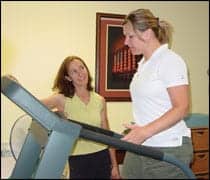Providers should be aware of the existence of possible barriers to achieving recommended levels of physical activity for disabled persons, especially for adults with amputation, research suggests.
“Physicians should talk to their patients about exercise. This is especially important for those with disabilities as they face additional barriers to exercise,” says Mark Sederberg, DO, who presented the study recently at the 28th Annual Meeting of the American Medical Society for Sports Medicine in Houston.
In the study, Sederberg and his colleagues evaluated the exercise rates in patients with amputation using a standardized exercise vital sign. Each amputee participant was asked how many days per week they performed moderate to vigorous intensity exercise, and for how long.
Among the 200 individuals who participated in the study, less than one-third of patients with an amputation meet the recommended weekly exercise amount of 150 total minutes. Additionally, increased BMI, increased chronic medical disease burden, female gender, and the lack of a functioning prosthesis were all significantly correlated with less weekly exercise, a media release from American Medical Society for Sports Medicine explains.
“The results of our research shine a light on the under-discussed topic of physical activity in persons with disabilities, specifically in person’s with limb loss,” Sederberg states. “The finding that those who exercised less had a higher disease burden, higher BMI, and were more likely female highlights populations that may need more attention.
“For these patients, having information ready about adaptive sports and exercise opportunities, and setting realistic goals with their healthcare provider’s support, can go a long way in supporting their fitness and well-being.”
[Source(s): American Medical Society for Sports Medicine, Newswise]





